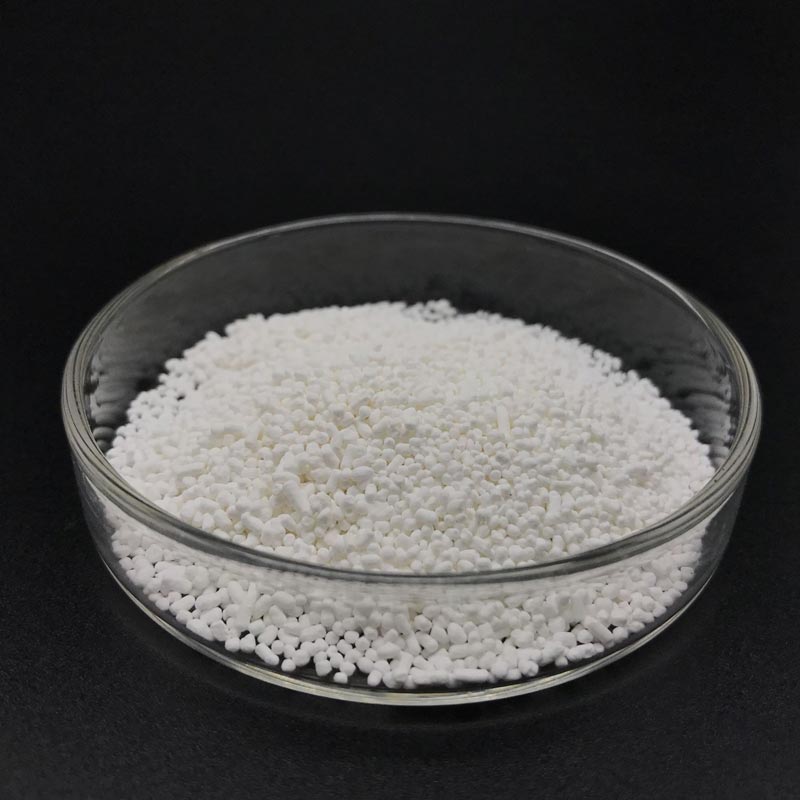What Are Water Treatment Agents and How Do They Improve Water Quality?
2025-02-26
Water is an essential resource that impacts nearly every aspect of daily life. From drinking and cooking to sanitation and industrial processes, clean water is necessary for our health and well-being. However, the water we use may contain impurities, pollutants, and harmful microorganisms, making it unsuitable for various uses. This is where water treatment agents come into play. But what exactly are water treatment agents, and how do they improve the quality of water? In this blog, we will explore the role of water treatment agents, the different types available, and how they contribute to safer, cleaner water.
What Are Water Treatment Agents?
Water treatment agents are chemicals or substances added to water in order to improve its quality by removing impurities, contaminants, or undesirable elements. These agents are commonly used in both industrial and municipal water treatment systems to ensure that the water meets the necessary standards for consumption, use in manufacturing, or discharge into the environment.
The agents can serve various purposes, such as disinfection, coagulation, flocculation, pH adjustment, and scale inhibition. Depending on the type of water treatment needed, different agents are used to achieve the desired results. These treatments help eliminate harmful microorganisms, reduce pollutants, and restore the water's clarity and taste.
Why Are Water Treatment Agents Necessary?
1. Eliminating Contaminants and Pollutants
One of the primary reasons for using water treatment agents is to remove harmful contaminants from water. Water sources, such as rivers, lakes, and underground reservoirs, can contain a range of pollutants, including bacteria, viruses, heavy metals, and toxic chemicals. These contaminants can pose significant health risks, especially if the water is used for drinking or food preparation.
Water treatment agents help remove or neutralize these pollutants, making the water safer for consumption. For example, chlorine and ozone are commonly used as disinfectants to kill bacteria and viruses. Coagulants and flocculants can be added to help remove suspended particles, while activated carbon can adsorb chemicals and toxins.
2. Improving Water Clarity
Clear water is not only more aesthetically pleasing but also an indicator of safe water. Water treatment agents such as coagulants and flocculants help remove suspended particles, dirt, and organic matter that cause water to appear cloudy or turbid. These agents cause the particles to clump together and form larger aggregates (or flocs) that can be easily removed through filtration or sedimentation.
By improving water clarity, these agents help create water that is more suitable for drinking, bathing, and industrial processes where clear water is essential.
3. Disinfection and Microbial Control
Waterborne diseases are a major public health concern, especially in regions where access to clean water is limited. Pathogens like bacteria, viruses, and protozoa can contaminate water and lead to illnesses such as cholera, dysentery, and typhoid fever. Disinfection is a crucial step in the water treatment process to kill or inactivate these harmful microorganisms.
Chlorine, ozone, and ultraviolet (UV) light are common water treatment agents used for disinfection. These agents effectively destroy the cellular structures of harmful microorganisms, preventing them from causing diseases.
4. Controlling pH Levels
The pH level of water is an important factor in determining its quality and suitability for different uses. Water that is too acidic or alkaline can cause corrosion in pipes, damage industrial equipment, and affect the taste and safety of drinking water. To maintain optimal water conditions, water treatment agents are used to adjust the pH levels of water.
For example, agents like lime or soda ash are added to increase the pH of acidic water, while sulfuric acid or hydrochloric acid may be used to lower the pH of alkaline water. Proper pH control ensures that the water is safe to use and reduces the potential for damage to plumbing and machinery.
5. Preventing Scale Formation
In many industrial settings, water is used for cooling systems, boilers, and heat exchangers. Hard water, which contains high levels of calcium and magnesium, can lead to the formation of scale deposits on equipment surfaces. This scaling can reduce efficiency, increase energy consumption, and even cause equipment failure.
Water treatment agents like scale inhibitors and softeners are used to prevent the formation of scale by binding with the calcium and magnesium ions, preventing them from precipitating out of the water. This helps maintain the efficiency of industrial systems and prolongs the lifespan of equipment.
6. Dealing with Specific Contaminants
Water treatment agents are also specialized to target specific contaminants depending on the water's source and quality. For example, if water contains high levels of heavy metals like lead, copper, or arsenic, agents like chelating agents or adsorbents can be added to bind with these metals and remove them from the water.
Similarly, if the water is contaminated with organic compounds or pesticides, activated carbon or advanced oxidation processes (AOPs) can be used to break down these harmful chemicals and purify the water.
Types of Water Treatment Agents
1. Coagulants and Flocculants
Coagulants and flocculants are used to remove suspended solids from water. Coagulants help destabilize particles in the water, causing them to clump together and form larger particles known as flocs. Flocculants aid in the further aggregation of these flocs, which can then be easily removed through filtration or sedimentation.
2. Disinfectants
Disinfectants, such as chlorine, ozone, and ultraviolet (UV) light, are used to kill or inactivate harmful microorganisms in the water. Chlorine is widely used for disinfection, while ozone is a powerful oxidizing agent used to treat water in both municipal and industrial settings.
3. pH Adjusters
To control the pH of water, pH adjusters like lime, soda ash, and acid (such as sulfuric acid) are added. These agents help bring the pH level of water within a neutral or optimal range, ensuring that the water is safe for use and does not cause damage to equipment.
4. Activated Carbon
Activated carbon is widely used for the removal of organic contaminants, including chlorine, volatile organic compounds (VOCs), and odors. It works through adsorption, where contaminants adhere to the surface of the carbon, effectively removing them from the water.
5. Scale Inhibitors
Scale inhibitors prevent the formation of scale deposits in industrial water systems. These agents are particularly useful in cooling systems and boilers, where hard water can cause mineral buildup and reduce efficiency.
Conclusion
Water treatment agents play a vital role in ensuring that the water we use is safe, clean, and suitable for various purposes. From disinfecting and removing harmful microorganisms to controlling pH levels and preventing scale formation, these agents are essential for both residential and industrial water systems. By using the right combination of water treatment agents, we can ensure that our water remains safe for drinking, industrial processes, and environmental discharge, contributing to healthier communities and more efficient systems.



